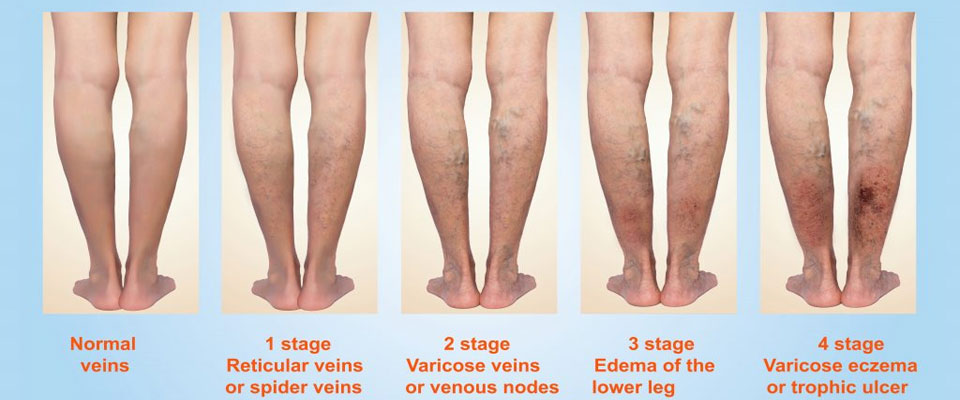
Why Do You Develop Leg Ulcers?
(1) Arterial insufficiency (blocked arteries)
(2) Peripheral neuropathy (impaired sensation, usually seen in diabetes)
There are other less common causes, but the vast majority of leg ulcers are due to one or a combination of these three problems. Ulcers "mixed" (i.e. more than one factor) are harder to cure and are more likely to recur.
If an ulcer is very painful, especially if the pain is worse at night and relieved by hanging the leg down, the blood flow into the leg is likely to be limited by an underlying arterial problem. Feet with chronic venous insufficiency, by contrast, feel more comfortable on a stool or in bed. Usually, neuropathic ulcers are painless. Treatment of a leg ulcer requires more than dressings, but the underlying cause also needs to be corrected.
How is Ulcer's cause established?
A vascular surgeon must perform a clinical evaluation to confirm the underlying cause of a leg ulcer. Duplex scanning of the arteries and veins in the affected limb is usually accurate to determine whether the circulation disorder underlying the ulcer is present.
Ulcers treatment due to blockages in the artery
An ulcer caused by ill arteries is usually very painful. Ulcerated legs with poor blood flow from the artery are considered to be critically ischemic (i.e. short blood). The treatment options for this condition are explained in detail in the Critical Limb Ischemia section of the website (see Treatment, Prevention, and Healing Conditions)
Ulcers Treatment Veins Leg ulcers are most commonly caused by varicose veins. They are the result of previous deep vein thrombosis in some cases. With compression bandaging treatment, venous ulcers usually improve rapidly. This is applied by a specialist nurse and improves tissue blood flow to promote ulcer healing. The compression bandaging is replaced by elastic compression storage that works during the day after the ulcer has healed.
Ulceration Leg ulcers tend to recur if the underlying cause is not treated. For this reason, it is important to determine the exact circulation abnormality that first led to the development of the ulcer. If a defective vein causes the problem, it should be treated. This can usually be done very effectively using one of the modern treatments with key-hole veins described in the website's treatment, techniques and services section. Laser therapy and VNUS-Closure are the two main methods. Since these can be done under local anesthetics, even very fragile patients can be treated to prevent ulcer recurrence.
Stockings for compression
Don't be desperate. Not all supplies of elastic compression are cheap and nasty. The more sophisticated versions provide graduated compression (that is, they squeeze on the ankle more tightly than around the calf). There are many varieties, some of which even have a fine silver thread that is much less irritating to the skin. Some patients, for example after a major deep vein thrombosis, develop defective deep veins in the leg. Either with surgery or new endovenous treatments, this is not easily corrected. Such patients develop chronic pain, swelling, skin stain and potential ulceration symptoms.
We here in Gujarat Hospital provide best treatment Leg Ulcer in Surat and Gujarat.